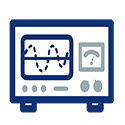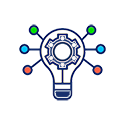
The longer someone abuses opiates, the higher the risk of serious and sometimes permanent damage. Long-term health effects of opiate abuse include damage to various parts of the body, such as the brain, heart, central nervous system and other major organs. Opiate abuse can affect pregnancy and cause adverse health effects in fetuses and newborn babies. Opioids (sometimes called narcotics) are a class of drugs that are chemicals — natural or synthetic — that interact with nerve cells that have the potential to reduce pain. Healthcare providers typically prescribe opioids to manage moderate to severe pain. The more common prescription opioids taken by mouth for moderate to severe short-term pain include oxycodone, hydrocodone, morphine and tramadol.
Opiates and Opioids
Such factors might include chronic pain, depression, anxiety, or trauma. This article also describes opioid withdrawal by stage and provides information on when to contact a doctor and the dangers of opioid use disorder. It occurs when a person with opioid use disorder abruptly stops using opioids. Individuals in mid-recovery from opioids were more likely to report use of medication to treat substance use disorder (e.g., buprenorphine) and attended more Narcotics Anonymous (NA) meetings.
- Short-acting benzodiazepines include oxazepam, alprazolam and temazepam.
- Withdrawal management should ideally occur under medical supervision.
- There was also a greater risk for slow physical development and attention-deficit/hyperactivity disorder (ADHD).
- The doctor gradually decreases your dosage over time to help reduce dependence.
- The ANR Clinic’s advertising rails against rapid detox despite the fact that they use a classic, naltrexone-based rapid detox protocol.
Help and Support Options
These underlying issues often fuel substance use, creating a cycle that can be difficult to break. Effective heroin addiction treatment must address these mental health concerns alongside addiction. Dual-diagnosis treatment programs are designed to provide integrated care for both conditions, ensuring neither issue is overlooked. Group therapy offers another layer of support by connecting individuals with peers who understand their experiences. Sharing stories, challenges and successes fosters a sense of community and reduces feelings of isolation.
Get Professional Heroin Addiction Support

Additionally, tailored treatment strategies are crucial in addressing the unique needs of each individual going through opiate detox. Medication-assisted treatment (MAT) is crucial in supporting recovery by stabilizing brain chemistry and alleviating withdrawal symptoms. Medications like buprenorphine and methadone can reduce cravings and help ease the transition during the recovery phase. These treatments not only lessen withdrawal discomfort but also improve the odds of achieving long-term recovery by aiding the brain’s healing process through structured support.
In New York State, OASAS and the Department of Health have partnered to offer a waiver for hospitals to provide detoxification services without an OASAS-issued certification. Opiates and opioids are some of the most addictive substances available. They have such a high addiction potential because of the way they work in the brain.


This interaction triggers an artificially intense release of dopamine, approximately tenfold higher than the natural amount. The body becomes conditioned to seek opiates repeatedly as it craves the heightened dopamine response. With continued usage, the body adapts and develops a tolerance, requiring increasingly higher doses of opiates to achieve the same initial effects.
During this peak phase, individuals may experience intense symptoms, including severe nausea, vomiting, and muscle pain. Inpatient rehab allows people to commit to their own well-being and good physical and mental health, relationships, finances and more. For this reason, going through a continuum of care programs, from medical detox through aftercare, is recommended. While an inpatient stay may last 28 days or longer, studies show the more time a person stays in rehab, the better their chances of recovery. Available at the inpatient/residential or outpatient levels of care, detoxification (detox) is often the first step in recovery. As opiates leave the body, they create uncomfortable and distressing mental and physical withdrawal symptoms.
- While opioids are their synthetic counterparts like Percocet, Oxycodone, Methadone, and Vicodin.
- You get instant and lifetime access to the Online Course of Videos, Audios, and PDF Downloads.
- To be diagnosed with an opioid use disorder, a person only needs to show two of the signs and symptoms listed.
- This means a dose of one type of opioid isn’t equivalent to the same dose of another opioid when it comes to providing pain relief or causing side effects.
Opioids are drugs such as heroin, opium, morphine, codeine and methadone. Opioid alcoholism symptoms withdrawal can be very uncomfortable and difficult for the patient. Individuals recovering from opioid dependence should consider engaging in therapeutic interventions, support groups, or counseling services. These resources can help address underlying issues related to substance use, thus fostering resilience and emotional stability.
Comprehensive pain recovery treatment plans can help you manage your pain levels and symptoms more easily. Healthcare providers generally don’t prescribe opioids during pregnancy, as the fetus can become dependent on opioids. Approximately 50% of babies develop neonatal abstinence syndrome when exposed to opioids while in the uterus. Some opioids are used to stop diarrhea by slowing gastric motility — the process by which food travels through your digestive tract via a series of muscular contractions. Once activated, opioid receptors initiate a cascade of chemical reactions that ultimately modulate the transmission of pain signals. Opioids also cause neurons that produce dopamine, the neurotransmitter that plays a role in how we feel pleasure, to fire more frequently.

Seeking Professional Help
When medications are used to treat opioid withdrawal, they themselves do not cause withdrawal due to the small doses that decrease over a short period of time. Treatment service and mutual-help utilization rates were similar among opioid and alcohol groups in early recovery. As such those with primary opioid problems may need ongoing and more intensive support for longer periods than other groups. This is opiate recovery why opioid drugs, even those prescribed by a doctor, are very addictive and can lead to opioid use disorder. Using any opioids for their euphoric effect, even for a short time, raises the risk of substance use disorder, overdose and death.
As a Schedule I illicit narcotic, it is a highly potent opiate that can be extremely difficult to quit. Many people who become addicted to heroin start with prescription opioids. Prescription opioids are often prescribed for legitimate reasons, such as pain relief after surgery.






